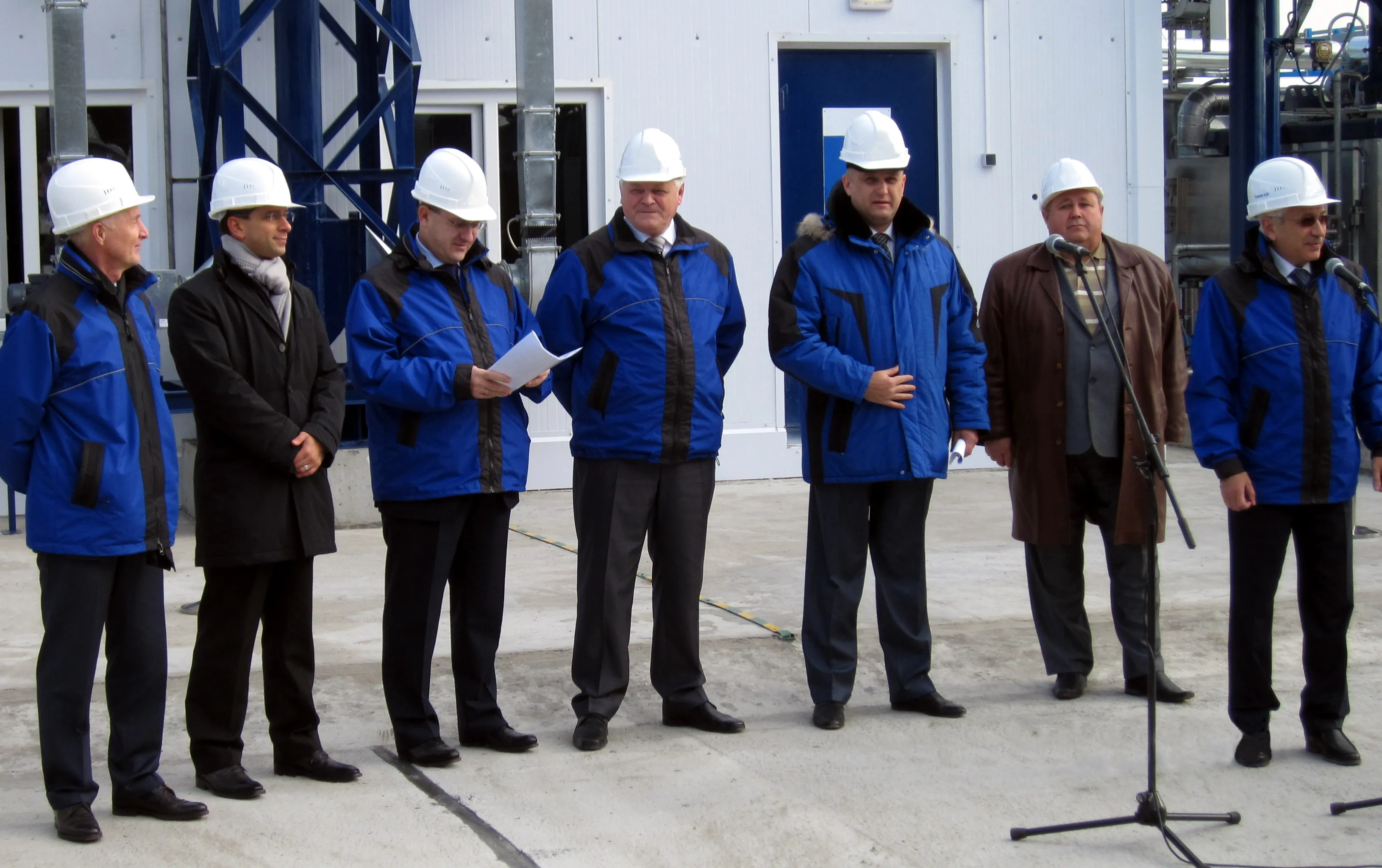Innovative and sustainable construction solutions are being tackled by many in the highways industry, including bitumen producers. Patrick Smith reports. Gazprom Neft is one of the largest and fastest growing oil and gas producers in Russia, selling its products to more than 18 Russian regions and exporting them to about 50 countries all over the world.
February 13, 2012
Read time: 5 mins

Innovative and sustainable construction solutions are being tackled by many in the highways industry, including bitumen producers. Patrick Smith reports
The key areas of the Russian oil company's operations included production and sale of crude oil and gas, as well as oil refining and marketing of petroleum products.
And the continuous increase in demand for bituminous products from the Russian market has pushed Gazprom Neft to invest further resources on this segment of activity.
Following the above strategy, a modern factory for production of polymer modified bitumen (PMB) and bitumen emulsion has recently been installed in Russia's largest oil refining complex in Omsk.
Italian company
The big turnkey project started more than two years ago, and several meetings and visits were necessary to classify and define the demanding specifications of the oil company. Finally, the equipment was delivered to the Omsk refinery using a total of 11 trucks.
After installation and the first successful tests in October, 2010, an official presentation at the factory has been held in front of Gazprom Neft's top management, refinery technicians, national journalists and television.
Among speakers at the event were Anatoliy Cherner (Deputy General Director for Logistics, Processing and Sales); Vladimir Kandrashin (Head of the Department of Bituminous Materials) and Diego Massenza (General Manager of MASSENZA).
The innovative factory has been designed to be fully automatically operated by three remote control panels, each of them in charge of different sectors (storage and heating system, emulsion plant and the PMB plant).
Each control panel is equipped with PLC and touch screen terminals and an interconnecting CPU, ensuring the data exchange among the panels. This particular configuration allows the operator to run the entire factory from a separate room, keeping each piece of equipment under control.
Simply setting on the control panels the total amount of emulsion and/or PMB to be produced and selecting the emulsion and/or PMB recipe, the operator can start the automatic production cycle.
A list of different recipes, datasheet of chemicals, chronological production records and other features are available on the control panels to make the different operations easier.
The bitumen emulsion and PMB production plants are both designed on batch technology, being the most versatile and flexible solution in terms of additives issue, polymer choice and production control, says MASSENZA.
Apart from emulsion and PMB production plants, the factory also includes all the other additional equipment necessary to make it a complete and independent unit including horizontal storage tanks for neat bitumen and PMB, vertical silos for emulsion, storage tanks for all chemicals, thermal oil heater, loading and unloading pumps and piping and valves.
MASSENZA says that the equipment's high degree of reliability is ensured by its extensive know-how and experience, and on top of this an extra commitment has been applied for this specific project to reach the high safety levels required by Gazprom Neft. As well as standard safety and security devices, additional items have been installed to monitor all raw materials and final product parameters such as temperature, level, pressure and flow.
Final testing and commissioning of this state-of-the-art factory is planned for the second quarter of 2011, enabling Gazprom Neft to supply final products on a regular basis.
Nynas polymer modified bitumens (PMBs) will be CE marked during 2011.
CE marking is an
And as national and local governments in some countries mandate the recycling of asphalt pavement, which can require high-temperature, energy-intensive asphalt mixes, one European paver has adapted a
Gerbert van Bochove of the Dutch construction company
The new product, consisting mainly of old asphalt (it contains up to 60% recycled material), is marketed by Heijmans under the trade name Greenway LE.
"Asphalt is a mixture of sand, gravel and bitumen, which binds the mixture into a weatherproof and wear-resistant material. Bitumen is solid under ambient conditions, and to be combined with the granular material, it needs to be heated until it liquefies. For the harder grades of bitumen typically used in roads, this change occurs at about 160°C," says Heijmans.
"At such temperatures old asphalt paving tends to break down into its constituent parts, which can then be reused in hot asphalt mixture. It is common practice for asphalt companies to incorporate some old asphalt into new batches during the mixing process. Companies in the Netherlands take this practice further than those in other countries. That's because the Netherlands has no gravel quarries from which to obtain virgin material. So it is not surprising that between 40-50% of Dutch high temperature asphalt mixtures typically consists of recycled paving." Gerbert realised that there was a way to avoid the high temperatures in asphalt recycling, and he based his idea on the characteristics of the Shell WAM [warm asphalt mixture] Foam process, which makes use of two types of bitumen, a soft one that melts at low temperatures, and a conventional hard one. The soft bitumen coats the granular material at a low temperature before the hard bitumen is added. The hard bitumen is frothed up with water just before it is added into the low temperature mixture.
"Soft bitumen acts as a natural rejuvenator. It makes the aged bitumen pliable, enabling the recycled asphalt to break apart without the need for high temperatures," says Gerbert.








